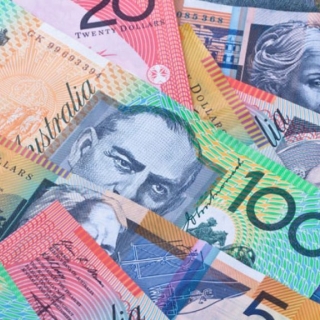


The Australian dollar (AUD) moved lower in response to weak domestic Gross Domestic Product (GDP) growth figures. Given that headline inflation in Australia has eased to the central bank's target range of 2%-3%, slower growth could put pressure on the Reserve Bank of Australia (RBA) to respond with lower interest rates.
Furthermore, fresh US export curbs on China, concerns about China's fragile economic recovery, and tariffs to be imposed by US President-elect Donald Trump turned out to be other factors weighing on the China-proxy Australian currency.
On the other hand, the US dollar (USD) continued to be supported by expectations of a less dovish Federal Reserve (Fed), although investors preferred to wait for more cues on the future path of interest rate cuts.
This, in turn, helped the AUD/USD pair to hold above the weekly low and multi-month trough touched on Tuesday. Traders might also prefer to wait for Fed Chair Jerome Powell's speech later today. In addition, the US Nonfarm Payrolls (NFP) report will influence the US interest rate outlook and provide fresh directional impetus.
Source: FXStreet
The Australian dollar strengthened against the US dollar on Wednesday, recouping the previous session's losses. This boost came from comments by RBA Assistant Governor Sarah Hunter: recent data appear...
The Australian dollar (AUD) strengthened to around 0.6530 against the US dollar (USD) in the Asian session on Monday, after falling more than 1% in the previous trading session. This strengthening occ...
The Australian dollar strengthened to around $0.657 on Friday (October 10), rebounding from a nearly two-week low. This gain came after RBA Governor Michele Bullock struck a cautious tone: services in...
Wednesday, October 8, 2025 - The Australian dollar weakened to around US$0.656, extending its decline as the US dollar continued to strengthen. Safe-haven demand for the greenback increased as the US ...
The Australian dollar (AUD) strengthened against the US dollar (USD) this morning after the latest inflation data from the TD Securities–Melbourne Institute (TD-MI) showed a higher-than-expected surge...
US stocks rose on Friday (October 17th) as investors reacted positively to President Trump's remarks alleviating concerns about further trade escalation with China, while regional bank stocks rebounded after Thursday's sharp declines. The S&P...
Oil prices posted a slight increase on Friday (October 17th), but were close to a weekly loss of nearly 3% after the International Energy Agency (IEA) forecast a widening oversupply, and U.S. President Donald Trump and Russian President Vladimir...
Gold prices (XAU/USD) fell 2% after hitting a record high of $4,379 on Friday (October 17th), falling below $4,250, triggered by comments by US President Donald Trump that triple-digit tariffs against China were unsustainable. At the time of...
 Federal Reserve Governor Christopher Waller said on Thursday he's on board with another interest rate cut at the U.S. central bank's policy meeting...
Federal Reserve Governor Christopher Waller said on Thursday he's on board with another interest rate cut at the U.S. central bank's policy meeting...
 US President Donald Trump said he spoke with Russian President Vladimir Putin, a day before meeting with Ukrainian leader Volodymyr Zelenskiy. "This...
US President Donald Trump said he spoke with Russian President Vladimir Putin, a day before meeting with Ukrainian leader Volodymyr Zelenskiy. "This...
 Wall Street stocks fell on Thursday (October 16th), losing earlier gains as resurgent credit concerns and ongoing US-China trade tensions weighed on...
Wall Street stocks fell on Thursday (October 16th), losing earlier gains as resurgent credit concerns and ongoing US-China trade tensions weighed on...
 European stocks fell as investors digested the latest earnings reports and awaited the outcome of a no-confidence vote in France. Nestlé SA jumped...
European stocks fell as investors digested the latest earnings reports and awaited the outcome of a no-confidence vote in France. Nestlé SA jumped...